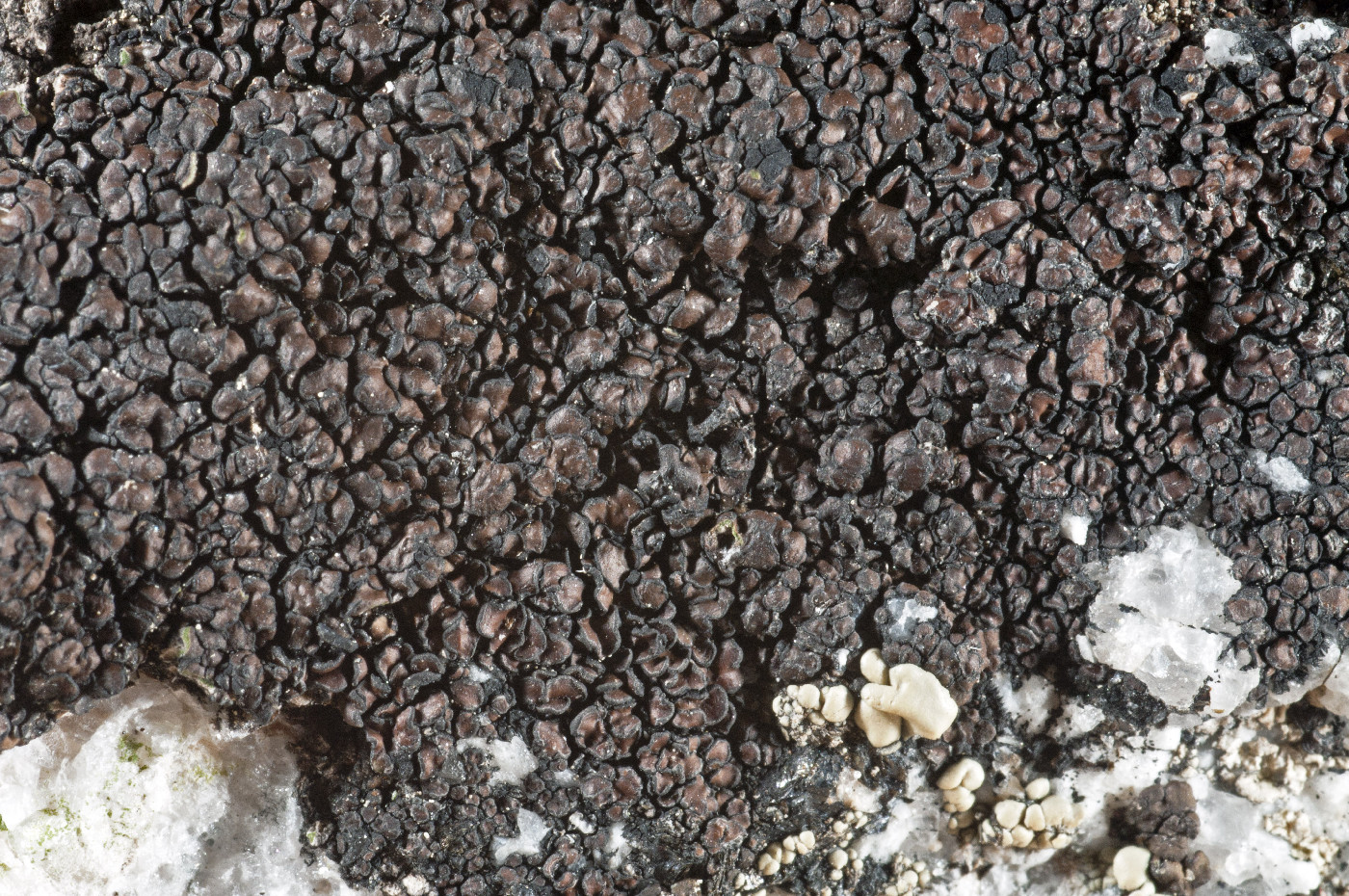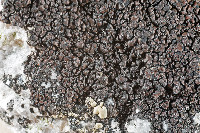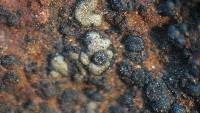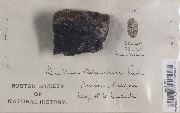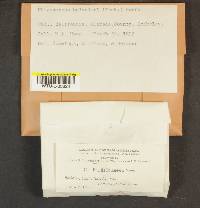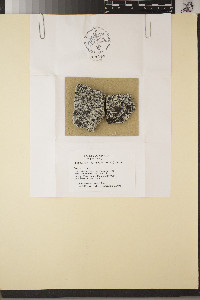
Consortium of Lichen Herbaria
- building a Global Consortium of Bryophytes and Lichens as keystones of cryptobiotic communities -
- Home
- Search
- Images
- Species Checklists
- US States: O-Z >
- US National Parks
- Central America
- South America
- US National Parks
- Southern Subpolar Region
|
|
|
|
Family: Rhizocarpaceae
[Buellia bolanderi Tuck.] |
Nash, T.H., Ryan, B.D., Gries, C., Bungartz, F., (eds.) 2004. Lichen Flora of the Greater Sonoran Desert Region. Vol 2. Life habit: lichenized, not lichenicolous Thallus: crustose, 2-7 cm in diam.; prothallus: black, rather thick, with a radiating or diffuse edge areoles: peltate, 0.6-1.3 mm in diam., 0.25-0.35 mm thick; margins: black or gray, thick, prominent, incurved, generally wavy sinuate, incised, sub-pulverulent surface: brown or reddish brown, concave or subplane, shiny or dull cortex: upper cells brown or brownish violet, with hyphae 4-7 µm wide, 25-40 µm thick, with an epinecral layer 20-40 µm thick that frequently sloughs off medulla: white, cells almost isodiametric, 5-6 µm wide; lower side dark, often easily visible, narrowly fixed to substrate Apothecia: dispersed, adnate or sessile between the areoles, (0.3-)0.6-1 mm in diam., 0.2-0.35 mm thick disc: black, finally rugulose and convex, epruinose margin: black, persistent or disappearing exciple: black or brownish violet peripherally, lighter internally, 60-70 µm thick in lateral part, in outer zone, K+ more distinctly violet epihymenium: brownish violet, K- or K+ distinctly violet hymenium: hyaline or pale violet, 100-135 µm tall; paraphyses: loosely conglutinate, branched, septate, tips fused into a pseudoparenchymatous tissue, 2-3 µm broad below, 3-5 µm apically asci: saccate or inflated, 80-110 x 22-30 µm, (1-)2-spored ascospores: hyaline then green or violet, finally dark brown, 3-septate to usually muriform, oblong-ellipsoid, (32-)40-50(-68) x 18-32 µm; wall: c. 2 µm thick; halo 3-4 µm wide, in K 4-6 µm wide Spot tests: cortex K-, C, KC-, P-; medulla I-, K+ yellow or K-, C-, KC-, P- Secondary metabolites: not determined. Substrate and ecology: on siliceous rocks, often on seepage surfaces but also on drier, often manured, surfaces World distribution: western North America, Greenland and Norway Sonoran distribution: southern California at 500-2300 m and Baja California. Notes: Rhizocarpon bolanderi is very common at least in the Sierra Nevadas. Superficially R. bolanderi is very similar to some brown Lecidea species, but its areoles are usually smaller, more concave, darker, and shinier. A chemotype with yellow medulla, which occurs in northern California, has been described as R. bolanderi var. sulphurosum (Tuck.) Zahlbr. It may represent a distinct taxon. |
|
|
|
Powered by Symbiota

